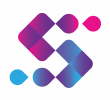PGP in Full Stack Development
Course Description
Master the working with every technology needed at the different phases of software development like project management, Agile Scrum methodology, Design Thinking, front-end plus back-end technologies, database managing system, development of cloud, and quality declaration for delivering a completed product.
The PGP in Full Stack Software Development makes you proficient in skills to work with technologies. The professional is likely to work on the customers, server sides and know what is going on when emerging an application.
PGP in Full Stack Software Development is intended to create and develop all-round full-stack capabilities in applicants. This program will educate you on the motives why a successful full stack developer does more than write code.
Why Full Stack Developer
- Full Stack Developer assists you to keep every part of the system running easily.
- Provides help to all in the team and highly ease the time and technical charge of team interaction.
- If an individual serves various roles, it saves your firm’s workforce, infrastructure, and operational charge.
Eligibility Standard
Course focuses on every individual in their program because the team believes in delivering education to all interested ones. We welcome fresher as well as working professionals for the program with 50% cumulative marks in their respective fields.
But, the mentioned standards will be appreciated
- A bachelor’s degree with an average of 50% or higher marks.
- Basic programming knowledge.
- Having prior work experience is not a mandatory requirement.
The ideal job profiles who will benefit from the program
- Software Developers.
- IT Professionals
- Engineers.
- Analysts
Learning Outcomes
- Structure and implement HTML/CSS.
- Apply intermediate and advanced web development practices.
- Implement basic JavaScript.
- Create visualizations in accordance with UI/UX theories.
- Develop a fully functioning website and deploy on a web server.
- Find and use code packages based on their documentation to produce working results in a project.
- Create webpages that function using external data.
- Architect solutions to programming problems by combining visual components and classes.
- Develop JavaScript applications that transition between states.
- Identify mobile strategies and design for multiple operating systems.
- Distinguishing trends in multi-device implementation.
- Create visualizations in accordance with UI/UX theories.
- Derive information from data and implement data into applications.
- Authenticate, store, and structure user data.
